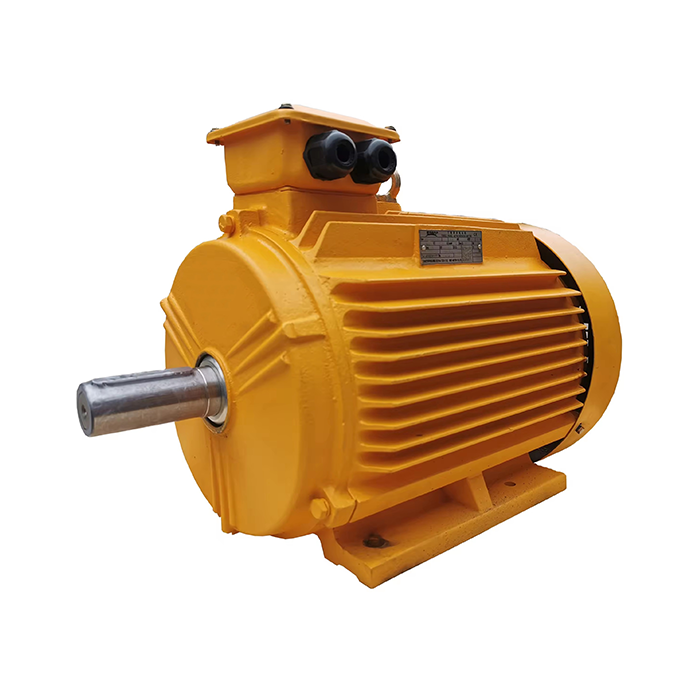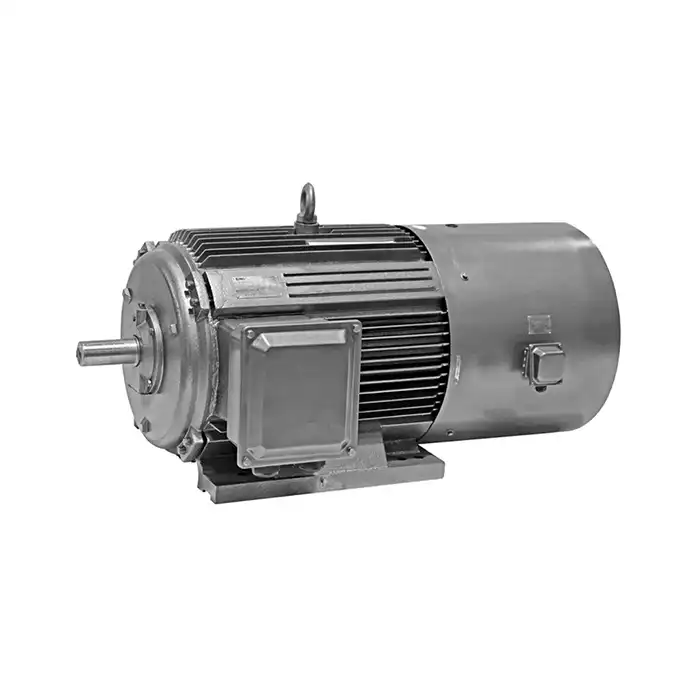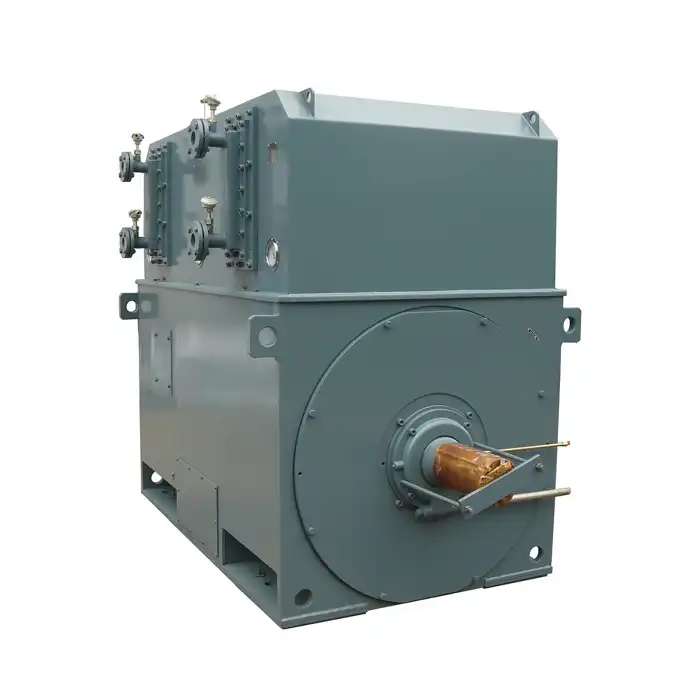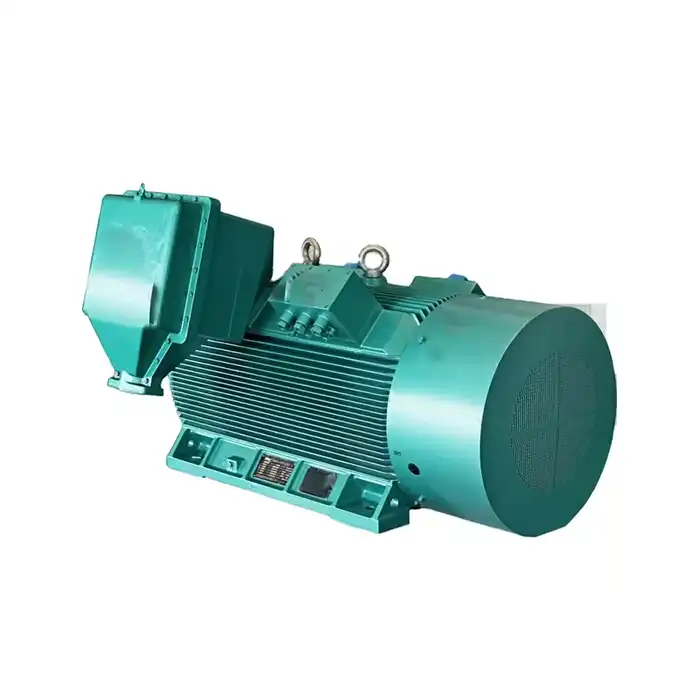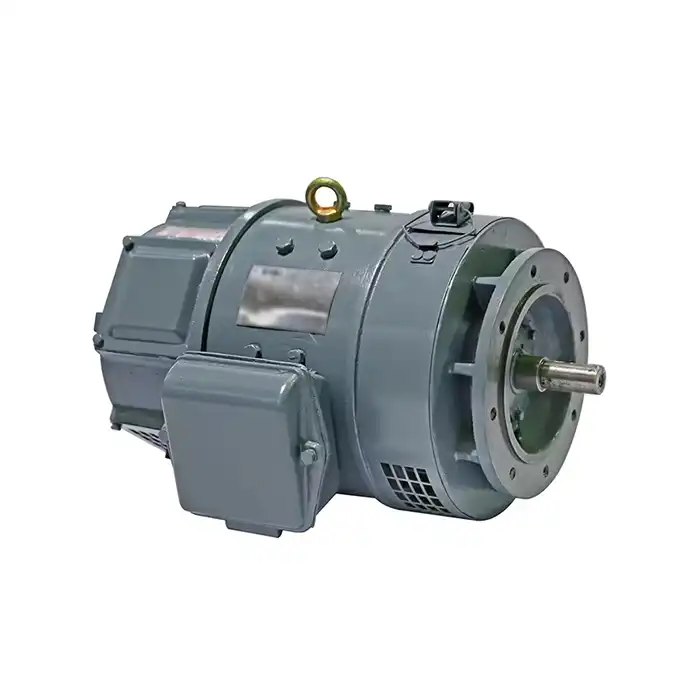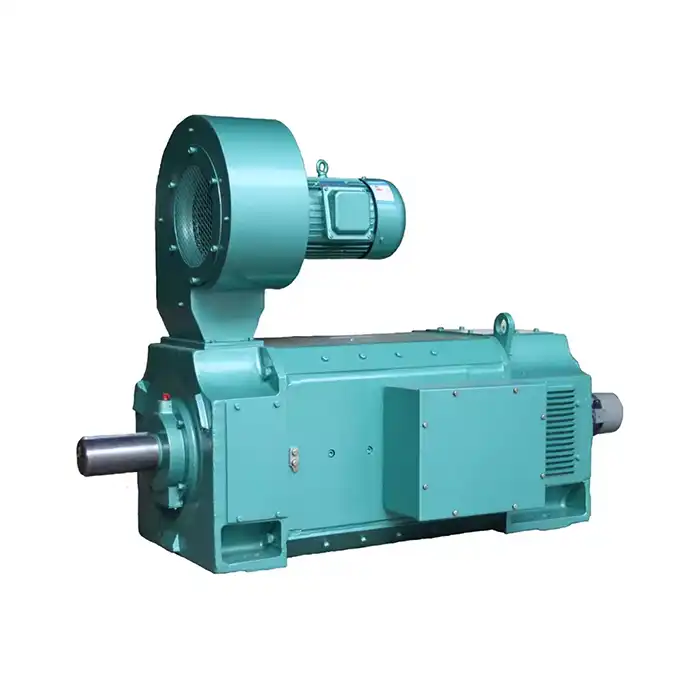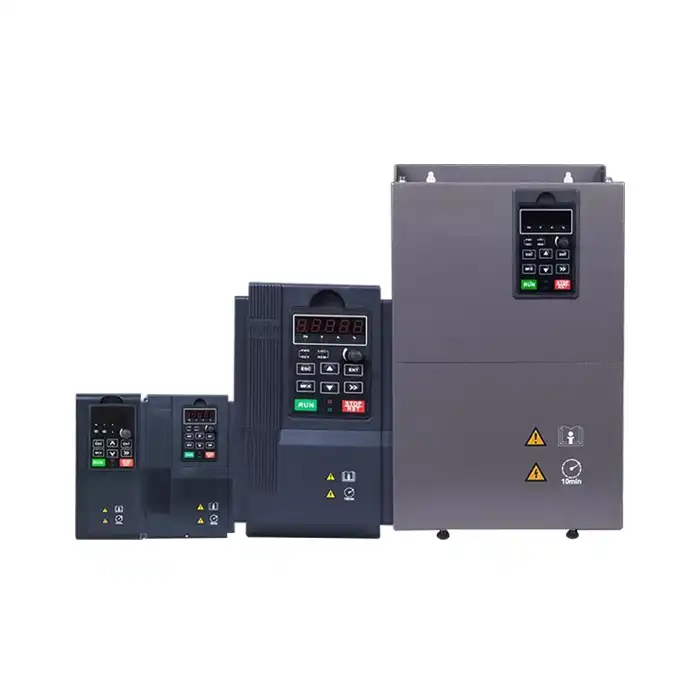Ex d vs. Ex e Protection Concepts for Explosion Proof Brake Motors
In industrial environments where combustible gases or dust are present, safety is paramount. Explosion proof brake motors play a crucial role in these settings, providing reliable power while minimizing the risk of ignition. Two primary protection concepts dominate the field: Ex d (flameproof) and Ex e (increased safety). This article delves into the differences between these protection methods, their applications, and emerging trends in explosion-proof motor technology.
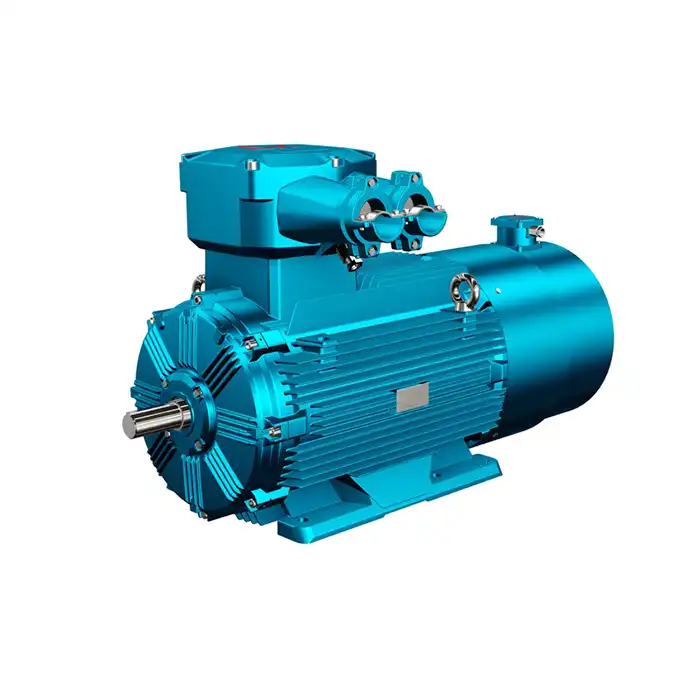
Series:YBBP
Voltage range:380V,660V,415V,380/660V,660/1140V
Power range:0.55-355 kW
Application:places where explosive gas mixtures exist in petroleum, chemical, mining, metallurgy, electric power, machinery and other industries.
Advantage: wide speed regulation range, fast dynamic response, high speed regulation accuracy.
Explosion-proof mark: Ex d I Mb, Ex d IIB T4 Gb, Ex d IIC T4 Gb
Others: SKF, NSK, FAG bearings can be replaced according to customer requirements.
Flameproof vs. Increased Safety: Pros and Cons
Ex d: Flameproof Protection
Ex d protection, also known as flameproof enclosure, is designed to contain an internal explosion and prevent it from igniting the surrounding atmosphere. The motor's housing is constructed to withstand the pressure of an internal explosion and cool any escaping gases below the ignition temperature of the surrounding explosive atmosphere.
Pros of Ex d protection:
- Highly effective in containing explosions
- Suitable for most hazardous areas, including those with hydrogen gas
- Can accommodate internal components that may produce sparks or arcs
Cons of Ex d protection:
- Heavier and bulkier design
- More expensive to manufacture
- May require special tools for maintenance
Ex e: Increased Safety Protection
Ex e protection, or increased safety, focuses on preventing the occurrence of arcs, sparks, or excessive temperatures that could cause ignition. This is achieved through enhanced insulation, reduced risk of ingress, and elimination of hot spots.
Pros of Ex e protection:
- Lighter and more compact design
- Generally less expensive than Ex d
- Easier to maintain and inspect
Cons of Ex e protection:
- Not suitable for all hazardous areas, particularly those with hydrogen gas
- Limited to components that do not produce arcs or sparks during normal operation
- May require additional protective devices
Application-Specific Selection Guidelines
Factors Influencing Protection Method Choice
Selecting the appropriate protection method for explosion proof brake motors depends on various factors:
1. Hazardous Area Classification
The type and concentration of explosive substances present in the environment play a crucial role in determining the suitable protection method. Ex d is often preferred in areas with highly explosive gases like hydrogen, while Ex e may be sufficient in less volatile environments.
2. Motor Size and Power Requirements
Larger motors with higher power outputs may benefit from Ex d protection due to the increased risk of internal faults. Smaller motors or those with lower power requirements might be adequately protected by Ex e methods.
3. Operational Conditions
Factors such as ambient temperature, altitude, and duty cycle can influence the choice between Ex d and Ex e protection. Ex e motors may be more suitable in environments with less extreme conditions, while Ex d might be necessary for more demanding applications.
4. Maintenance Considerations
Ex e motors are generally easier to maintain and inspect, which can be advantageous in facilities with frequent maintenance schedules. Ex d motors, while more robust, may require specialized tools and expertise for maintenance.
Industry-Specific Applications
Oil and Gas Industry: In offshore platforms and refineries, both Ex d and Ex e motors find applications. Ex d motors are often used in areas with high concentrations of explosive gases, while Ex e motors may be employed in less critical zones.
Chemical Processing Plants: Chemical plants often utilize a combination of Ex d and Ex e motors. Ex d protection is crucial in areas handling highly volatile substances, while Ex e motors may be used in storage areas or less hazardous processing zones.
Mining Operations: Underground mines, particularly coal mines, frequently employ Ex d motors due to the presence of methane gas. Ex e motors might be used in above-ground facilities or areas with lower gas concentrations.
Pharmaceutical Manufacturing: In pharmaceutical production, where flammable solvents are common, both Ex d and Ex e motors find applications. The choice often depends on the specific process and the potential for explosive atmospheres.
Future Trends: Hybrid Protection Methods
Combining Ex d and Ex e Concepts
As technology advances, manufacturers are exploring ways to combine the benefits of both Ex d and Ex e protection methods. These hybrid approaches aim to provide enhanced safety while addressing some of the limitations of each method.
Partial Ex d Enclosures: One emerging trend is the use of partial Ex d enclosures within an overall Ex e motor design. This approach involves encasing only the components prone to sparking or arcing (such as switches or brushes) in a flameproof enclosure, while the rest of the motor benefits from the lighter and more cost-effective Ex e protection.
Advanced Materials and Manufacturing Techniques: Innovations in materials science and manufacturing processes are enabling the development of motors that offer Ex d levels of protection with reduced weight and size. These advancements may lead to a new generation of explosion proof brake motors that combine the best attributes of both protection methods.
Integration of Smart Technologies
The integration of smart technologies in explosion proof motors is another emerging trend. These developments aim to enhance safety, efficiency, and maintenance practices.
Built-in Monitoring Systems: Future explosion proof brake motors may incorporate advanced monitoring systems that can detect potential issues before they lead to hazardous conditions. These systems could monitor parameters such as temperature, vibration, and electrical characteristics in real-time.
Remote Diagnostics and Predictive Maintenance: The ability to remotely monitor and diagnose motor performance could revolutionize maintenance practices in hazardous environments. This technology could enable predictive maintenance, reducing downtime and improving safety by addressing potential issues before they become critical.
Regulatory Evolution and Standardization
As technology advances, regulations and standards governing explosion proof equipment are likely to evolve. This may lead to new classifications or protection methods that better address the complexities of modern industrial environments.
Harmonization of Global Standards: Efforts to harmonize international standards for explosion proof equipment may result in more unified approaches to protection methods. This could simplify the selection and application of explosion proof brake motors across different regions and industries.
Performance-Based Standards: Future regulations may shift towards more performance-based standards rather than prescriptive requirements. This could foster innovation in protection methods and allow for more flexible approaches to ensuring safety in hazardous environments.
Sustainability and Energy Efficiency
As industries increasingly focus on sustainability, future explosion proof motors are likely to incorporate design elements that enhance energy efficiency without compromising safety.
High-Efficiency Motor Designs: Advancements in motor design and materials may lead to more energy-efficient explosion proof brake motors. These improvements could help reduce energy consumption and operating costs in hazardous area applications.
Integration with Renewable Energy Systems: As renewable energy sources become more prevalent in industrial settings, explosion proof motors may need to be designed to work seamlessly with these systems. This could involve adaptations to handle variable power inputs or integration with energy storage solutions.
Conclusion
The choice between Ex d and Ex e protection concepts for explosion proof brake motors depends on a complex interplay of factors, including the specific hazardous environment, operational requirements, and maintenance considerations. While each method has its strengths and limitations, the future of explosion proof motor technology lies in hybrid approaches that combine the best aspects of both protection concepts.
As industries continue to evolve and face new challenges, the development of smarter, more efficient, and adaptable explosion proof motors will be crucial. By staying informed about these advancements and carefully evaluating the specific needs of each application, engineers and facility managers can ensure the safest and most effective use of explosion proof motors in hazardous environments.
Are you looking for reliable and efficient power equipment solutions for your industrial automation, HVAC, energy, or specialized application needs? Shaanxi Qihe Xicheng Electromechanical Equipment Co., Ltd. is committed to providing high-quality, energy-efficient power equipment, including explosion proof brake motors, tailored to your specific requirements. Our team of experts is ready to assist you with pre-sales consultations, technical support, and comprehensive after-sales service. To learn more about our products and how we can help optimize your operations, please contact us at xcmotors@163.com. Let us power your success with safe, efficient, and innovative solutions.
References
1. Johnson, A. R. (2021). Comparative Analysis of Ex d and Ex e Protection Methods in Hazardous Environments. Journal of Industrial Safety Engineering, 15(3), 287-302.
2. Smith, B. T., & Thompson, C. L. (2020). Advancements in Explosion Proof Motor Technology: A Review. International Journal of Electrical Engineering and Technology, 11(2), 56-71.
3. Garcia, M. E., et al. (2022). Hybrid Protection Concepts for Next-Generation Explosion Proof Motors. IEEE Transactions on Industry Applications, 58(4), 3901-3912.
4. Patel, R. K. (2019). Selection Criteria for Explosion Proof Motors in Chemical Processing Industries. Chemical Engineering Progress, 115(9), 45-52.
5. Lee, S. H., & Kim, J. W. (2023). Smart Technologies in Explosion Proof Motor Systems: Opportunities and Challenges. Sensors and Actuators A: Physical, 345, 113778.
6. Brown, D. A. (2021). Regulatory Trends and Future Directions in Explosion Proof Equipment Standards. Safety Science, 142, 105357.



